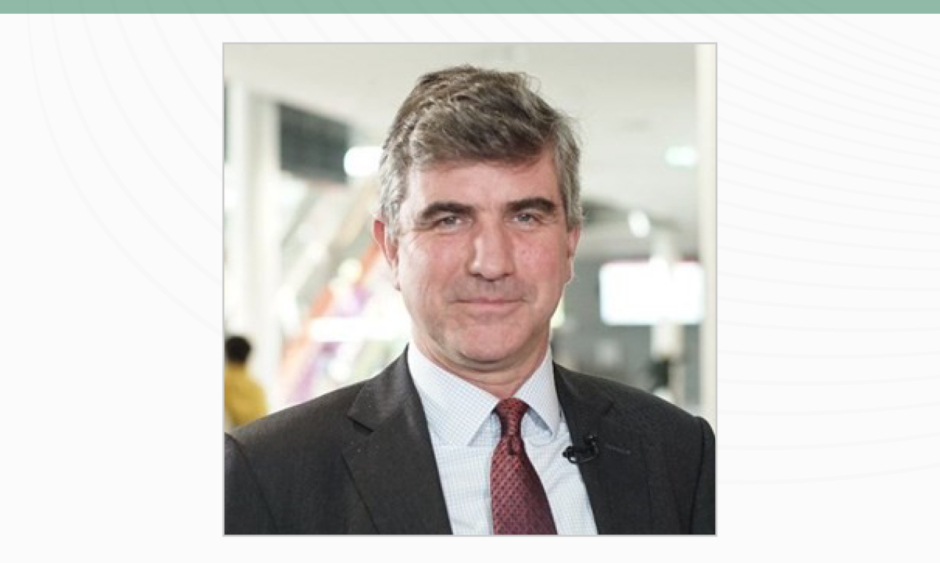Prof Bernard Prendergast | Course Director of PCR London Valves and Co-ordinator for Valves and Structural Activities at PCR; Professor of Interventional Cardiology and Valvular Heart Disease, Guy’s and St Thomas’ NHS Foundation Trust, London, UK
![]()
What fascinates you the most about interventional cardiology, and why did you decide to pursue a career in this discipline?
There have been three defining moments in my medical career. The first was when I assisted in a renal transplant as a medical student and was stunned when restoration of blood flow to the icy, grey donor kidney produced a pink healthy organ and immediate production of urine. The second was my first primary angioplasty procedure as an independent interventional cardiologist, when restoration of perfusion in an occluded right coronary artery reversed complete heart block and associated haemodynamic compromise in a previously fit young man. And finally, my first transcatheter aortic valve implantation (TAVI) procedure in 2008, when a calcified rigid aortic valve was replaced with thin, mobile leaflets in a 45-minute procedure via the femoral artery. Progress in medicine, particularly in interventional cardiology, has been extraordinary over the past 30 years and it has been a privilege to work in such a stimulating and rapidly moving field.
How did you become involved with the PCR board and what was the goal you set out to achieve when you joined? What has been your proudest achievement within the board?
I was fortunate to undertake an Interventional Fellowship in Paris, France, with Alec Vahanian (at the end of the last century!) and EuroPCR was the ‘go to’ meeting where I learnt a huge amount about the emerging discipline of coronary intervention. Opportunities came my way to present cases and research data, and the early uptake of TAVI in the UK provided the platform for my greater involvement as a member of the PCR Board. The successful growth of PCR London Valves over the past 5 years has been hugely rewarding and the entire team were thrilled by the success of the virtual meeting in 2020 that generated many of the virtual formats and concepts that have now been refined and adopted for EuroPCR 2021.
You are currently the Course Director of PCR London Valves and Co-ordinator for Valves and Structural Activities at PCR. Please could you tell us about your duties in both roles, and any key projects that are associated?
The field of valve and structural intervention has expanded exponentially in the past decade, transforming the clinical landscape to the benefit of patients and creating widespread demand for education in these new techniques. PCR London Valves was established 10 years ago and is now the largest meeting worldwide dedicated to the field of valvular heart disease, with >3,000 participants at the last face-to-face meeting in 2019, and >6,000 participants at the virtual meeting in 2020. Sister meetings in China (PCR-CIT Chengdu China Valves) and Japan (PCR Tokyo Valves) have enjoyed similar success and we are now working in partnership with Cardiovascular Research Foundation/Transcatheter Cardiovascular Therapeutics (CRF/TCT) to create a further educational workshop in Latin America as part of our growing ‘Partners in Learning’ collaboration.
It has been decided to move EuroPCR 2021 into an online meeting this year. What do you believe to be the advantages and disadvantages of a virtual congress?
Of course, we are all missing the buzz of large congresses, with packed halls, busy corridors, and dynamic exhibitions providing opportunities for networking, planning future projects, and catch-up with old friends and colleagues. On the other hand, the restrictions associated with the pandemic have perhaps made us re-examine the need for frequent international travel (with large carbon footprint), regular absence from home and the hospital, and the genuine benefits of repetitive slide presentations. Virtual congresses have forced us to re-invent medical education in new and attractive formats, focus on exactly what we are aiming to achieve, and make our programmes accessible to a larger worldwide community: in essence, the founding goals of PCR over 30 years ago. If we can ultimately capture the best of both formats, then COVID-19 will have allowed us the opportunity to make considerable progress.
How much of an impact do you believe the EuroPCR congress has, both directly on interventional cardiologists and indirectly on patients?
Over 8,000 interventional cardiologists visit Paris each May to attend the EuroPCR Course, drawn by the prospect of the highest-calibre postgraduate medical education combined with up-to-the-minute late-breaking data, practical demonstrations, opportunities for interactions with friends and colleagues, and the attractions of one of the world’s great cities. The fact that the programme content is firmly rooted in everyday clinical practice means that educational take-home messages are translated immediately and directly to patient care.
Of course, travel to Paris is not possible in 2021, but the ready accessibility of the virtual programme means that even more participants will be able to benefit from everything on offer, with even greater benefits for patients worldwide.
Which sessions are you most looking forward to at EuroPCR 2021? Why?
The EuroPCR 2021 programme is packed with educational material covering the entire spectrum of cardiovascular intervention. The main sessions, encompassing live transmissions from leading cardiac centres, are always a major draw and their incorporation into the virtual broadcast sessions will be a particular highlight. We have a total of 68 Hotline presentations, including major Late-Breaking Trials, specific channels dedicated to ‘classroom style’ simulated learning, and a prestigious innovation award from the Jon DeHaan Foundation for novel breakthrough technologies. Importantly, all of the course content will remain available on demand via the PCR platform1 until 26th August; so even if you missed it the first time round, there is still plenty of time to benefit from the comprehensive range of educational material.
What have been your personal clinical experiences during the COVID-19 pandemic, and what lasting impacts do you predict the pandemic will have on the field of interventional cardiology?
The COVID-19 pandemic has taken us all way outside our comfort zone, caring for patients in difficult circumstances whilst dealing with the anxiety of protecting our families and ourselves. At the same time, we have missed the opportunities for regular face-to-face interaction with friends and colleagues at home and abroad. In London, we have seen many young and sick patients; not only with cardiovascular complications of COVID, but also with serious manifestations of everyday cardiac problems as a consequence of misdiagnosis or delayed presentation. The situation is now returning towards normality (at least temporarily) but we are faced with a new challenge of long waiting lists for diagnosis and treatment. I fear it will be at least 2–3 years until we truly emerge from the crisis.
Could you highlight the principal findings and wider relevance of the recently published review you co-authored, entitled ‘Incidence and Outcomes of Infective Endocarditis Following Transcatheter Aortic Valve Implantation’?
TAVI has revolutionised our approach to the management of aortic stenosis in the last 15 years, enabling treatment in patients previously considered high risk or unsuitable for surgery, and now offering a simple, minimally invasive procedure for younger, lower-risk patients. Infective endocarditis is a life-threatening complication of prosthetic valve replacement, which affects approximately 0.3–1.0% per person-year and is challenging to diagnose and treat. The impact of TAVI on the prevalence of the incidence and natural history of prosthetic valve endocarditis is incompletely understood. In this review article,2 we highlighted how differences in patient age, comorbidities, valve design, implant technique, and requirement for frequent healthcare contact in the TAVI population have potential to influence the risk of endocarditis, its microbiological characteristics, clinical management, and outcome.








